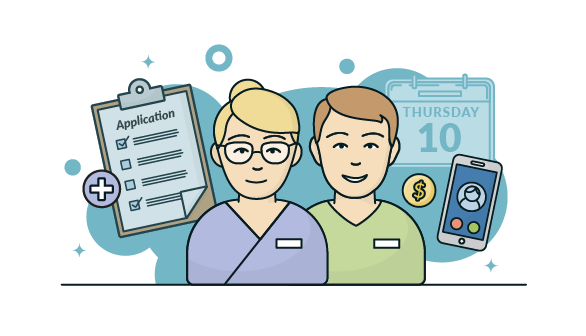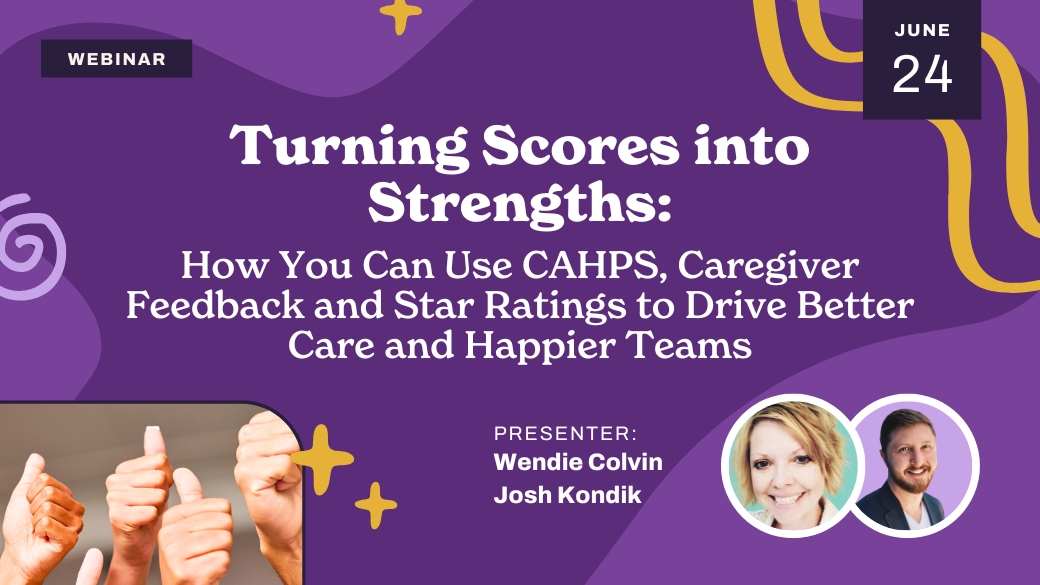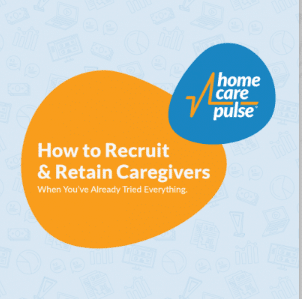3 High-Impact Recruitment/Retention Initiatives You Can Launch Without Spending a Dime

With the right strategies, some agencies have largely been able to sidestep the caregiver shortages crisis. Here are some of the key caregiver recruitment and retention initiatives they’re using.
Recruiting caregivers is easy. Long lines of qualified caregivers are competing with each other to get hired –and those who do get hired are easy to retain for as long as you need them. If you’re struggling to hire and keep good caregivers, you must be doing something wrong.
Said almost nobody.
The fact of the matter is that recruiting and retaining solid caregivers is harder today than it’s ever been. Skyrocketing demand for caregivers, increased competition from other companies inside and outside of home care, and a robust economy that favors job seekers all contribute to a perfect storm of recruitment and retention struggles for home care companies.
Interestingly, there are companies who have largely sidestepped this crisis by identifying the right best practices and following them. The right initiatives have given some home agencies a significant upper hand in finding, hiring, and keeping the best caregivers.
It’s important to recognize that there are no shortcuts; to be a competitive employer, you need a good culture, competitive pay/benefits, and good scheduling, among other things. However, if you’re competing against an array of other businesses that offer these, you might benefit from something that goes above and beyond.
This is by no means an exhaustive list, but here are a few of the key ways we’ve seen individual agencies and whole companies do that moved the needle on recruitment and retention. If you’ve considered any of these and decided not to use them, this might provide insight on why they could be worth your time.
While some of these initiatives could be best implemented with resources or platforms that cost money, all of them could be implemented at no cost to your agency beyond the cost involved in some time from you or your staff.
Agencies around the country are increasingly using these initiatives to drive results. Are you?
Initiative #1: Respond same-day to any and all applicants with whom you want to schedule an interview.
What does it cost you? From a dollar standpoint, the only cost might be a little extra time from your staff and/or investment in a technology solution to make it easier. While same-day can be a challenge, you’ll see your effort reward with more candidates responding to you, coming in to interviews, and ultimately accepting offers.
If you’re truly committed to doing what it takes to get your pick of applicants, we challenge you to go a step further and set a goal to contact applicants within two business hours. This will require operational processes allowing you to make it a priority; you’ll also find it easier if you’ve invested in a platform that will let you send SMS texts to applicants (which we suggest using either way). There are very few agencies doing this, largely because it’s a daunting goal; however, you’re likely to see a drastic increase in your hiring pool if you do.
Why it’s so high-impact: Data increasingly shows that a faster hiring process is one of the most important determinants of whether you’ll be able to compete with other businesses for employees.
In the 2020 Home Care Benchmarking Study, most of the caregivers we surveyed said that they chose to work for their current company because it was the first to offer them a job.
In the sales world, it’s well known that following up quickly with a prospect drastically increases the chances that the deal will close. (In fact, companies are over 10x more likely to successfully reach a prospect if they respond within 5 minutes of an inquiry as opposed to 30 minutes or more.) This principle applies to recruitment as well; if you follow up faster, you’re far more likely to be successful in getting that applicant to an interview and you’ll have a much larger hiring pool as a result.
Initiative #2: Offer a daily pay solution.
Most agency owners are leery when they hear the phrase ‘daily pay’, and it’s understandable—for many, it evokes thoughts of overworked office employees dishing out pay on a daily basis, cashflow difficulties, and employees developing poor financial habits.
In fact, various vendors that facilitate daily pay have done an excellent job at ensuring none of these are true. For example, the leading daily pay provider (named, not surprisingly, Daily Pay) handles all of the logistics themselves, so that there are no changes to your payroll processes; provides resources to help your employees develop budgets and financial wellness habits, and even uses internal processes to safely offset any cashflow concerns and handle the transaction without taking your employees’ banking info.
On top of that, their only charge is a small per-transaction fee that companies can pass on to employees who opt in to the program.
What does it cost you? Depends on the daily pay vendor you use and whether you pass on costs to the employees, but it’s typically just a small per-transaction fee of a couple dollars.
Why it’s so high-impact: Home care workers are disproportionately likely to come from low-income households and live paycheck-to-paycheck. For many of them, the chance to get their money as soon as they earn it is a powerful incentive.
Many of daily pay’s early adopters in home care have reported powerful increases in caregiver recruitment and retention because they’re offering an enticing benefit that their competitors aren’t.
Daily pay might not be the right option for every agency, but it’s a powerful option that agencies should investigate. Due to the relatively low cost to implement, it essentially comes down to whether it’s something your caregivers (and potential future caregivers) are interested in. As such, we recommend getting feedback from your caregivers on whether this benefit would be useful to them.
Initiative #3: Establish a process to periodically reach out to past caregivers to see if they’re interested in returning and ask if they have any friends to refer to you.
Most agencies are doing this to a degree, but few of them have an established process to ensure it happens consistently and effectively. There are many ways to do this, and it depends on the size and circumstance of your agency; however, properly executed it can provide a strong addition to your recruitment pipeline.
What does it cost you? Time from you or staff members, and potentially the cost of an SMS, recruitment CRM, or other platform to facilitate and track the communication.
Why it’s so high-impact: for agencies with a decent-sized pool of past candidates, it provides a ready group of people with whom you already have a relationship. While their likelihood of returning will depend on the circumstances of them leaving, many past employees are open to returning to a company that has treated them well.
In the 2020 Home Care Benchmarking Study, we tracked recruitment methods for all agencies in the industry and compared them to the recruitment methods used by the largest and most successful agencies in the industry. Interestingly, the biggest difference in how the two groups recruited was that the large, successful agencies were more consistent in reactivating past caregivers to work for them again.
Agencies that rely on this method also typically show higher caregiver retention rates, suggesting that once reactivated, these caregiver stay longer than typical employees.
Implement a Process to Learn the Needs of Your Caregivers
In the end, which initiatives and strategies are most effective will depend on the needs and circumstances of the individual caregivers you’re hiring. We strongly recommend implementing a good feedback loop (above and beyond an “open door policy”) to ensure that you have a good pulse on the needs of your caregivers.
In addition, we recommend using a feedback loop to measure the success of new initiatives, so that you can make future decisions based on fact rather than gut.
To learn more about how we can help you to understand the needs of your caregivers and measure the impact of new initiatives, visit our Attract & Retain Caregivers page or schedule a phone call with one of our experts.







